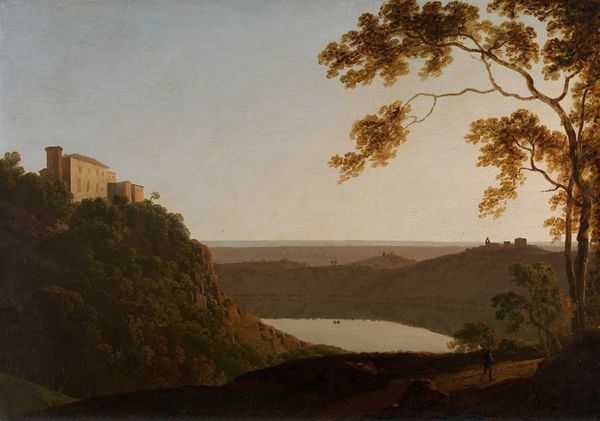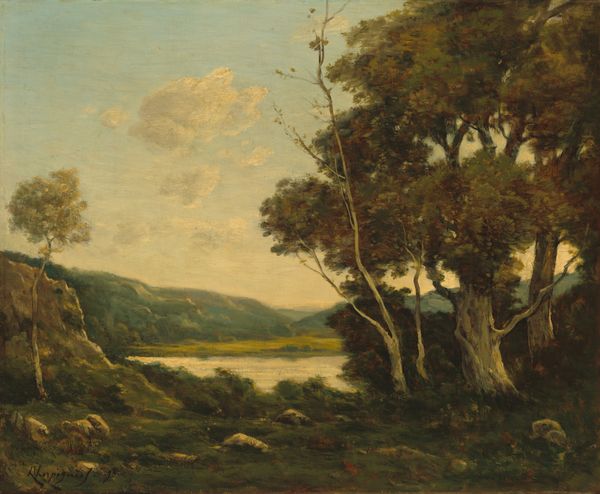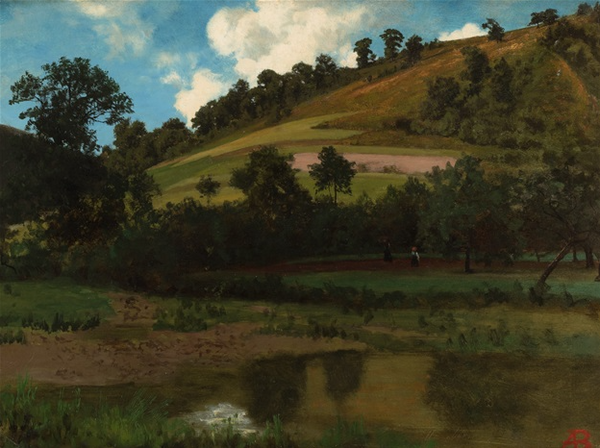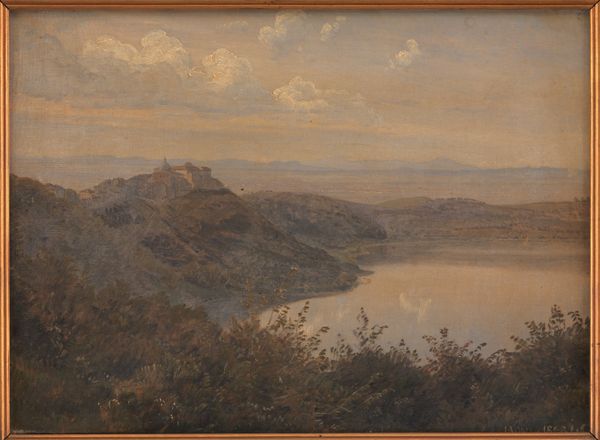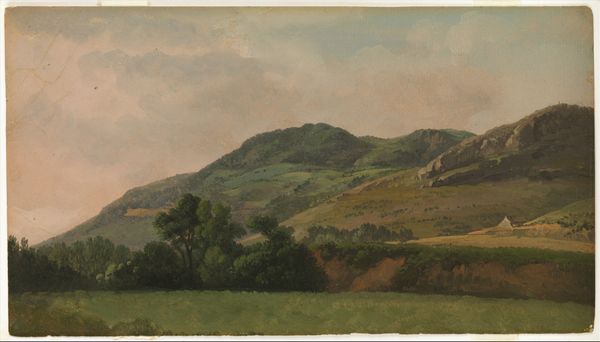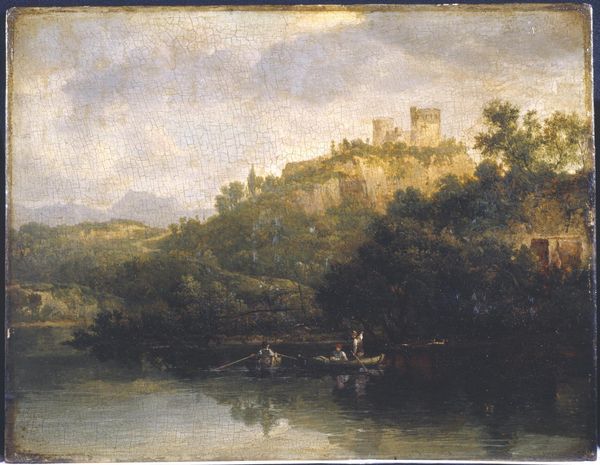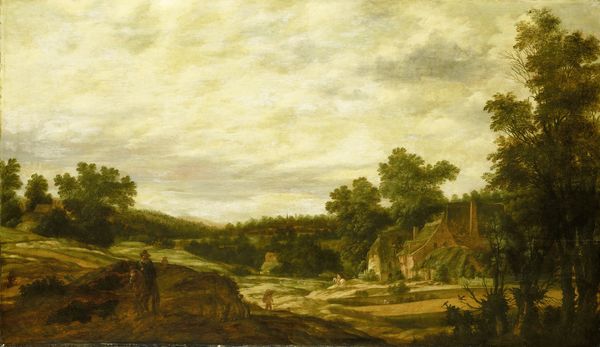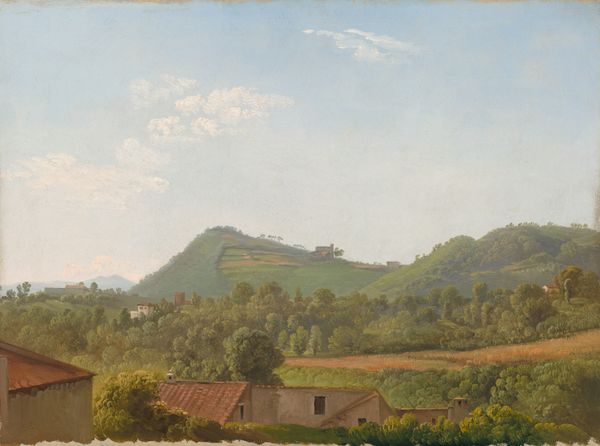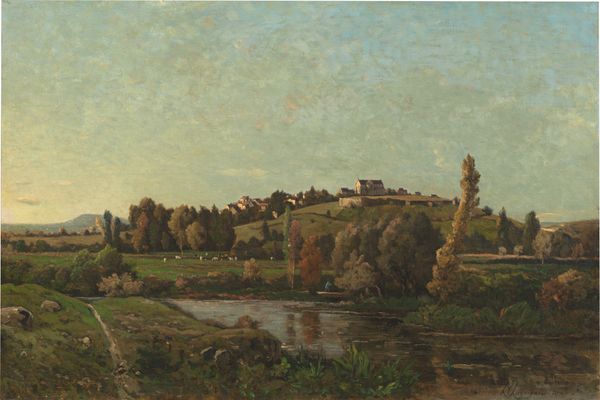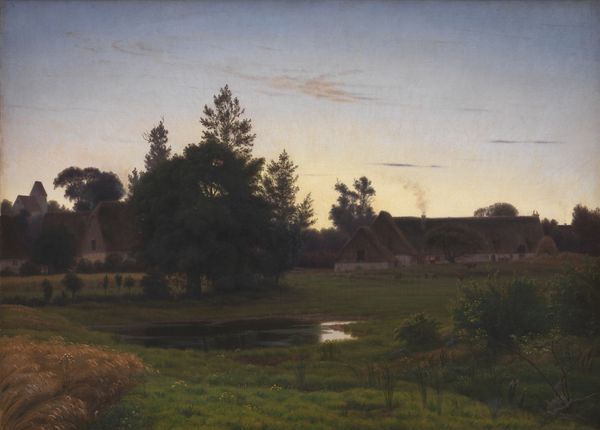
oil-paint, fresco, canvas
#
oil-paint
#
landscape
#
fresco
#
oil painting
#
canvas
#
romanticism
#
cityscape
#
italian-renaissance
#
italy
#
realism
Dimensions: 35.7 x 48.6 cm
Copyright: Public Domain
Curator: Looking at Eduard Wilhelm Pose's "Italian Landscape with Wide Valley and Castle," dating from around 1842 to 1845, the immediate impression is one of subdued tranquility. The colors are soft, the lines gentle. It almost feels dreamlike. Editor: Pose situates this landscape painting firmly within the Romantic tradition. This movement often looked to idealized, often pastoral scenes, steeped in a nostalgic gaze towards the past—especially Renaissance Italy as a marker of high European civilization. Consider the social context: Europe roiled by revolutionary ideas but also grappling with nascent nationalism and empire-building. Curator: Absolutely. The imposing castle, for instance, speaks volumes. It suggests not only power but also permanence, order in a world teetering on the edge of significant social and political change. There’s a distinct sense of control being exerted over this landscape. And look how the water reflects that power dynamic, doubling the presence of the castle as an enduring force. Editor: The positioning of the castle in relation to the "wide valley," to cite the artwork's title, speaks volumes. It is no accident that it sits atop the rise—a symbol of ownership and dominion. Notice, too, how the human presence is so limited; aside from the architecture itself, it's easy to feel people are removed entirely. That absence is deliberate. Curator: Do you see the tension here? On the one hand, it romanticizes nature and rural simplicity. On the other, it emphasizes a structured social order. Are these harmonious, or is the artist subtly pointing toward potential contradictions? How can landscape painting both embody resistance and uphold the status quo? Editor: Those contradictions were absolutely at play in the 19th century and reverberate still today within institutions holding collections like this—institutions often complicit in upholding particular narratives of power. Pose’s work becomes not merely a scene, but an assertion of European dominance expressed through the "beauty" of its landscapes. Curator: Precisely. When we explore such romantic landscapes through an intersectional lens, we uncover layers of socio-political messaging cleverly disguised within these aesthetic portrayals of "beauty". We are left questioning which values endure today and which continue to uphold legacies of marginalization and empire. Editor: So when we view "Italian Landscape with Wide Valley and Castle," let’s try not just seeing rolling hills. Consider instead what they obscure, and who benefits from this carefully constructed vision of the Italian countryside.
Comments
stadelmuseum about 2 years ago
⋮
Eduard Wilhelm Pose was one of the artists of the so-called Düsseldorf school of painting in the nineteenth century. Various journeys to Italy inspired him to create realistic, lifelike landscapes, of which this work is one. Pose produced this study in the open air directly in front of the motif, with the southern light transforming the rugged medieval castle into an illuminated setting.
Join the conversation
Join millions of artists and users on Artera today and experience the ultimate creative platform.
